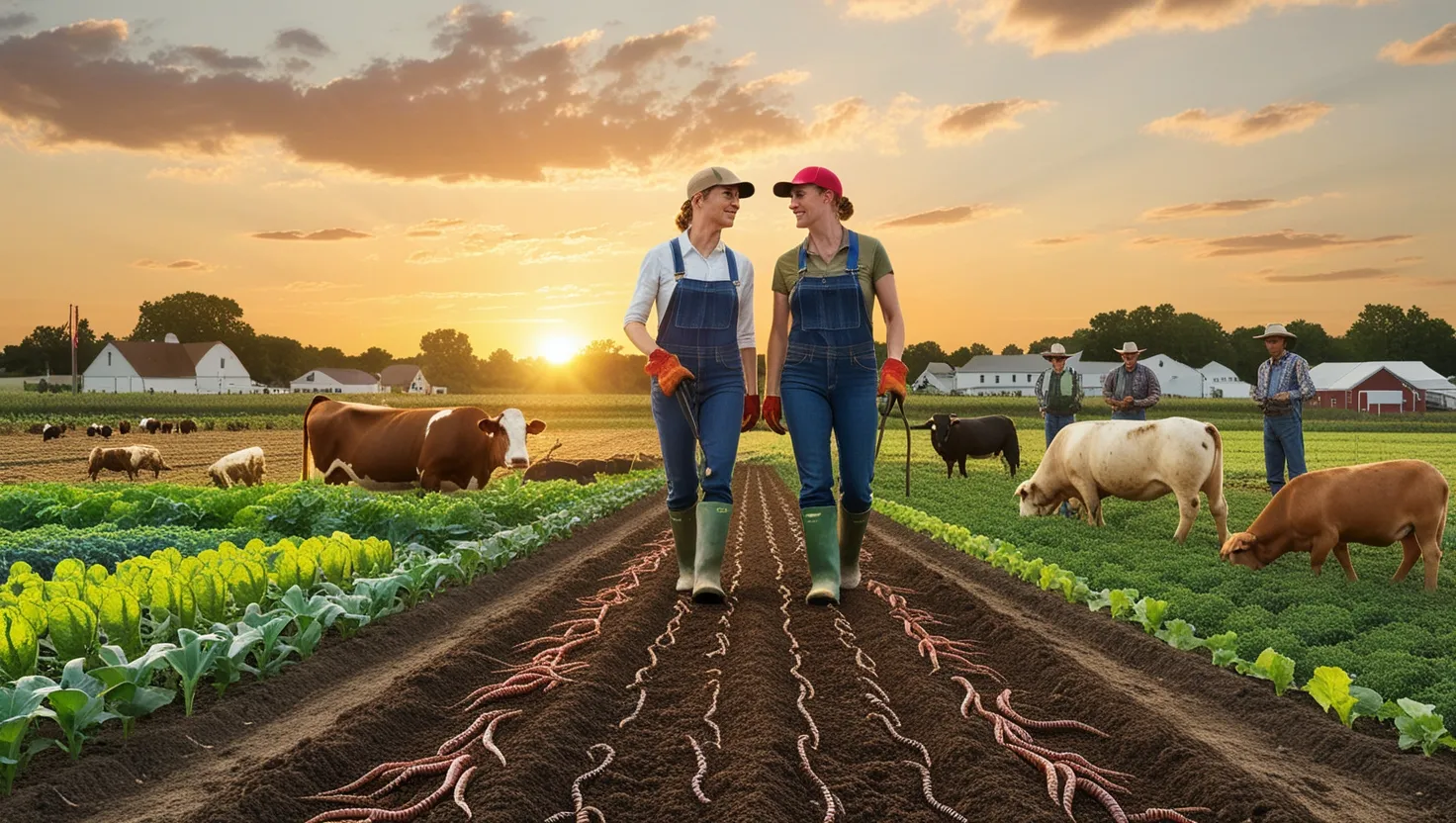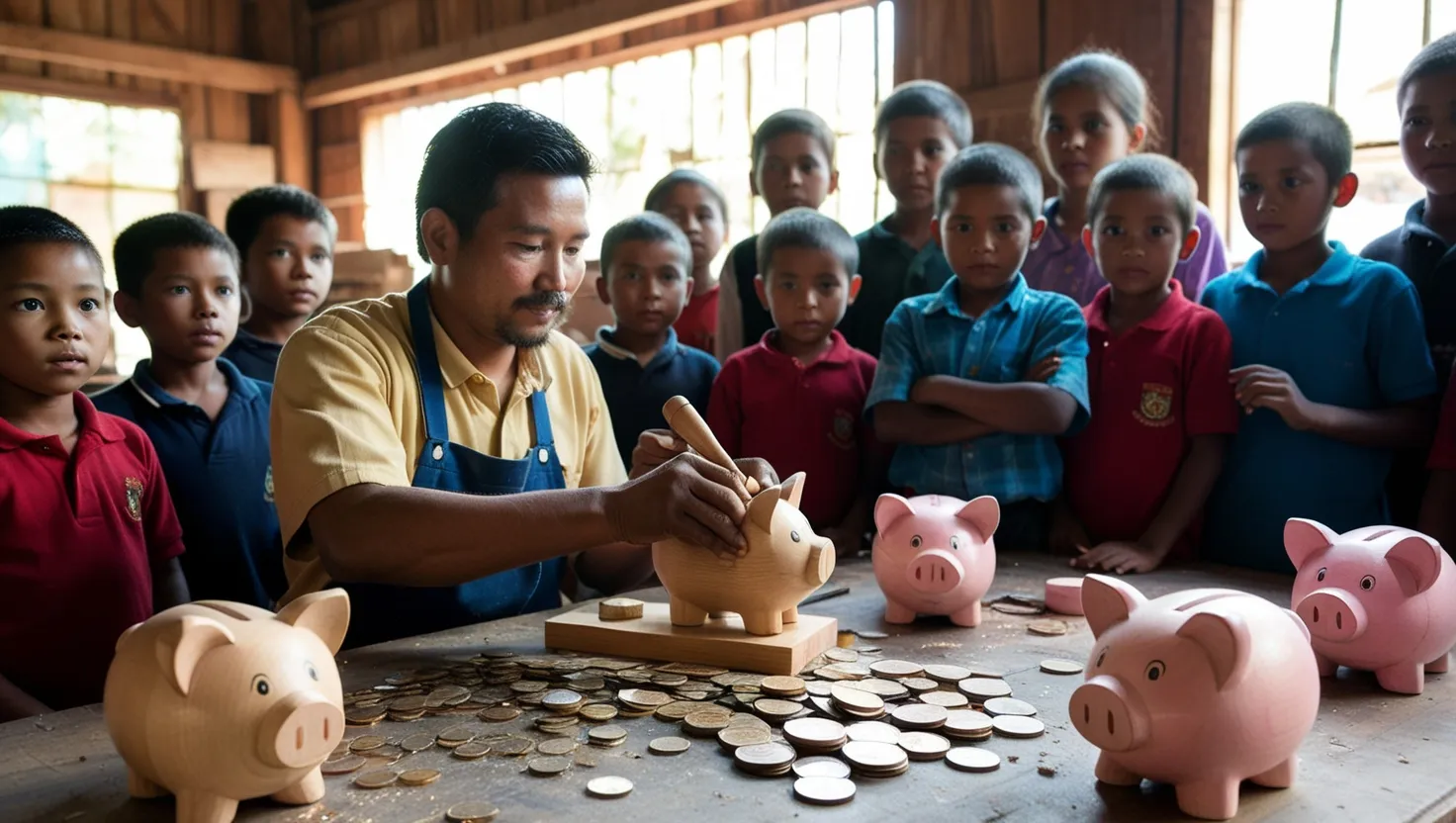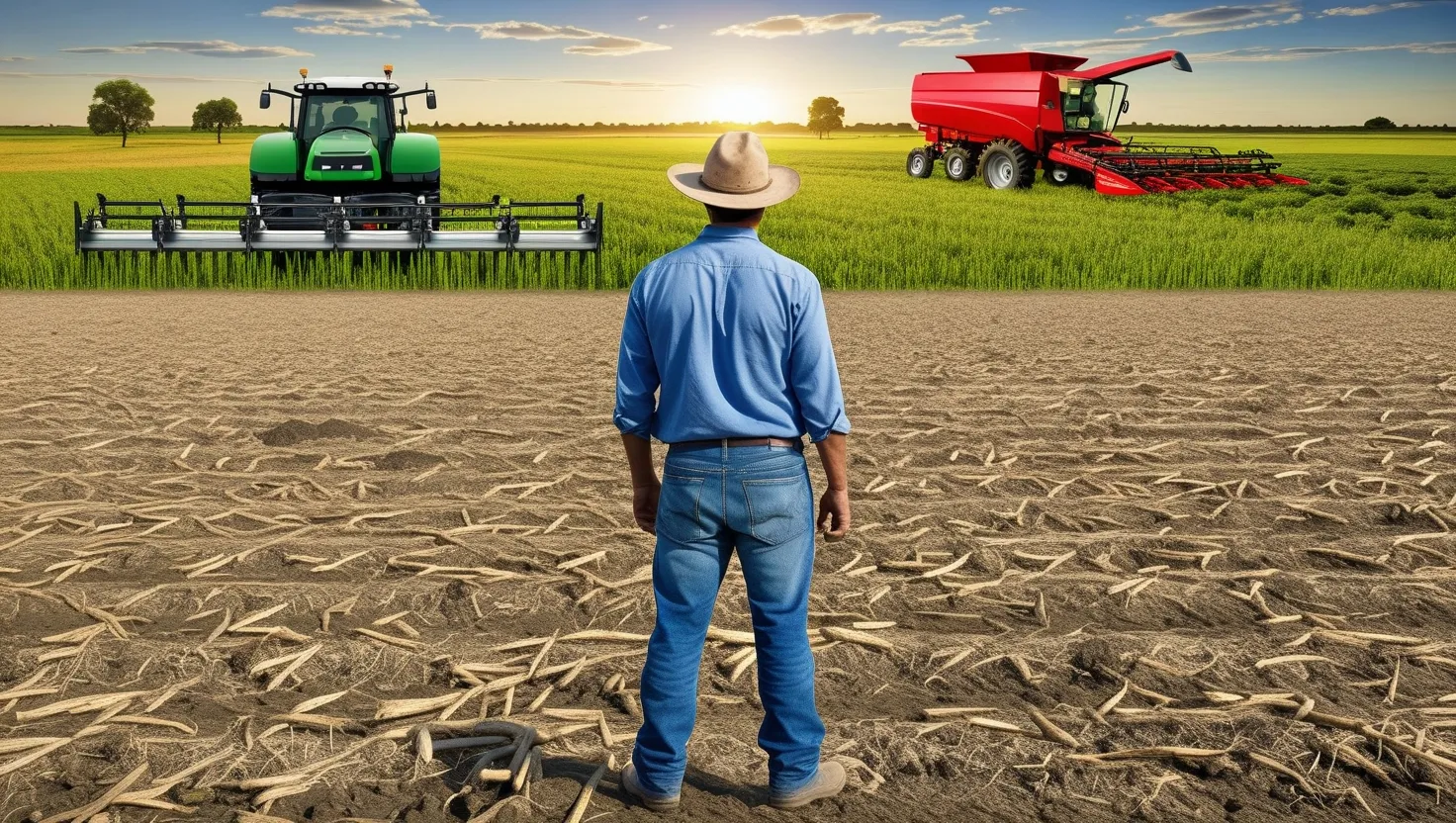Growing up on our family farm, my sister Sarah and I never imagined we’d one day be at the helm of a regenerative agriculture revolution in our small Midwestern town. Yet here we are, five years after inheriting the land from our late parents, transforming not just the soil beneath our feet, but our relationship and our entire community.
When the lawyer first read us the will, Sarah and I could barely look at each other. Years of resentment and misunderstanding had driven a wedge between us. I had stayed to help on the farm while she pursued a finance career in the city. We both felt the other had abandoned our shared heritage in some way.
Those first few months were tense. We argued constantly about what to do with the farm. I wanted to continue the conventional methods our father had used, while Sarah pushed for selling the land to developers. Neither of us was truly happy with our options.
Then one day, while clearing out Dad’s old office, we stumbled upon a dusty book about regenerative agriculture. Curious, we began to read, and a whole new world opened up before us.
“What if we could make this farm not just profitable, but actually improve the land over time?” I remember asking Sarah.
She raised an eyebrow, intrigued despite herself. “Is that even possible?”
Thus began our journey into the world of regenerative farming. We learned about cover crops, no-till practices, and rotational grazing. We discovered how these methods could increase soil health, capture carbon, and boost biodiversity.
But it wasn’t an easy road. Transitioning to regenerative practices required a significant upfront investment. Equipment needed to be modified or replaced. We had to learn entirely new ways of managing the land.
Sarah’s finance background proved invaluable as we crunched numbers and sought out grants and loans. My hands-on farming experience helped us implement new techniques effectively. Slowly, we began to see how our different skills could complement each other rather than clash.
As the seasons passed, we noticed changes. The soil became richer, darker. Earthworms, once a rare sight, now appeared in abundance. Birds and beneficial insects returned to our fields. Our yields, after an initial dip, began to steadily increase.
But the most remarkable transformation wasn’t in the land - it was in us. Working together towards a common goal, Sarah and I rediscovered the bond we’d lost. Late nights poring over soil reports and early mornings checking on cover crops became opportunities to reconnect, to share stories and dreams.
“Remember when we used to chase fireflies in these fields?” Sarah asked one evening as we walked the property.
I smiled, recalling those carefree childhood days. “Who would have thought we’d be chasing sustainable farming practices instead?”
Our success didn’t go unnoticed. Neighboring farmers, initially skeptical, began to ask questions. We started hosting workshops, sharing what we’d learned. Soon, a small community of regenerative farmers began to form in our area.
Local restaurants and markets took interest in our chemical-free, nutrient-dense produce. We partnered with a nearby college to conduct soil health studies on our land. Gradually, our little farm became a hub of innovation and education.
The impact rippled through the community. As more farms adopted regenerative practices, the local economy began to shift. New businesses sprang up to support sustainable agriculture. Young people who had left for cities began to return, drawn by the promise of meaningful work and a connection to the land.
Five years on, our farm looks vastly different from when we inherited it. Cover crops paint the fields in vibrant greens and purples. Cattle graze in carefully managed rotations. Hedgerows and pollinator strips buzz with life.
But the true harvest has been in relationships restored and a community revitalized. Sarah and I now work side by side, our different perspectives strengthening our partnership. We’ve become part of a network of farmers, researchers, and entrepreneurs all working towards a more sustainable future.
“Do you ever wonder what Mom and Dad would think of all this?” Sarah asked recently as we watched the sun set over our thriving fields.
I pondered for a moment. “I think they’d be proud. Not just of the farm, but of us - of how we’ve grown together.”
She nodded, a smile playing on her lips. “Who knew healing the land could heal us too?”
Our journey into regenerative agriculture has taught us invaluable lessons about patience, resilience, and the power of working with nature rather than against it. We’ve learned that true prosperity isn’t measured in quick profits, but in the long-term health of our soil, our community, and our relationships.
As we look to the future, we’re filled with hope and excitement. What new discoveries await us? How else can we innovate and improve? What further positive changes can we spark in our community and beyond?
One thing is certain - this journey has only just begun. With each season, each new technique we try, each person we teach, we’re planting seeds for a more sustainable, connected future. And that, we’ve found, is the most rewarding crop of all.
“The ultimate goal of farming is not the growing of crops, but the cultivation and perfection of human beings.” - Masanobu Fukuoka
How might your own life or community benefit from adopting a more regenerative approach, be it in agriculture or another area?
Our story is just one among many in the growing regenerative agriculture movement. Across the country and around the world, farmers are rediscovering ancient wisdom and combining it with modern science to create more resilient, productive, and ecologically sound food systems.
This shift isn’t just about farming techniques - it’s about changing our relationship with the land, with our food, and with each other. It’s about recognizing that we’re part of a complex web of life, not separate from it or above it.
As we’ve embraced this holistic view on our farm, we’ve seen it spill over into other areas of our lives. We’ve become more patient, more observant, more willing to collaborate and experiment. We’ve learned to think in systems and cycles rather than linear paths.
These principles can be applied far beyond agriculture. Businesses can adopt regenerative practices that build long-term value rather than extracting short-term profits. Communities can focus on nurturing connections and resilience. Individuals can cultivate habits that replenish rather than deplete their mental and physical resources.
“The greatest change we need to make is from consumption to production, even if on a small scale, in our own gardens. If only 10% of us do this, there is enough for everyone. Hence the futility of revolutionaries who have no gardens, who depend on the very system they attack, and who produce words and bullets, not food and shelter.” - Bill Mollison
What small step could you take today towards a more regenerative lifestyle?
As Sarah and I continue to steward this land, we’re constantly amazed by the lessons it teaches us. We’ve learned to embrace complexity and diversity rather than seeking oversimplified solutions. We’ve discovered the power of patience, of allowing natural processes to unfold in their own time.
Perhaps most importantly, we’ve learned the value of community. No farm is an island, and neither is any person. Our success has been built on the shared knowledge of other farmers, the support of our neighbors, and the enthusiasm of our customers.
We’ve come to see that regenerative agriculture isn’t just about food production - it’s about creating a new (or perhaps very old) way of relating to the world around us. It’s about recognizing our interdependence and working to strengthen the connections that sustain us all.
As we look to the future, we’re filled with both excitement and a sense of responsibility. We know that the choices we make on our farm ripple out far beyond our fencelines. Every cover crop we plant, every workshop we host, every relationship we nurture is a step towards a more resilient, abundant future for all.
We invite you to join us on this journey. Whether you’re a farmer, a gardener, or simply someone who eats food (so, everyone!), you have a role to play in shaping our food system and our relationship with the land.
What possibilities might open up if we all approached our work, our communities, and our planet with a regenerative mindset?
As the sun sets on another day on our farm, Sarah and I often find ourselves reflecting on how far we’ve come and the road ahead. We know there will be challenges - changing weather patterns, economic pressures, the constant need to learn and adapt. But we face these challenges with hope and determination, knowing that with each season, we’re building not just a more resilient farm, but a more resilient future for all.






